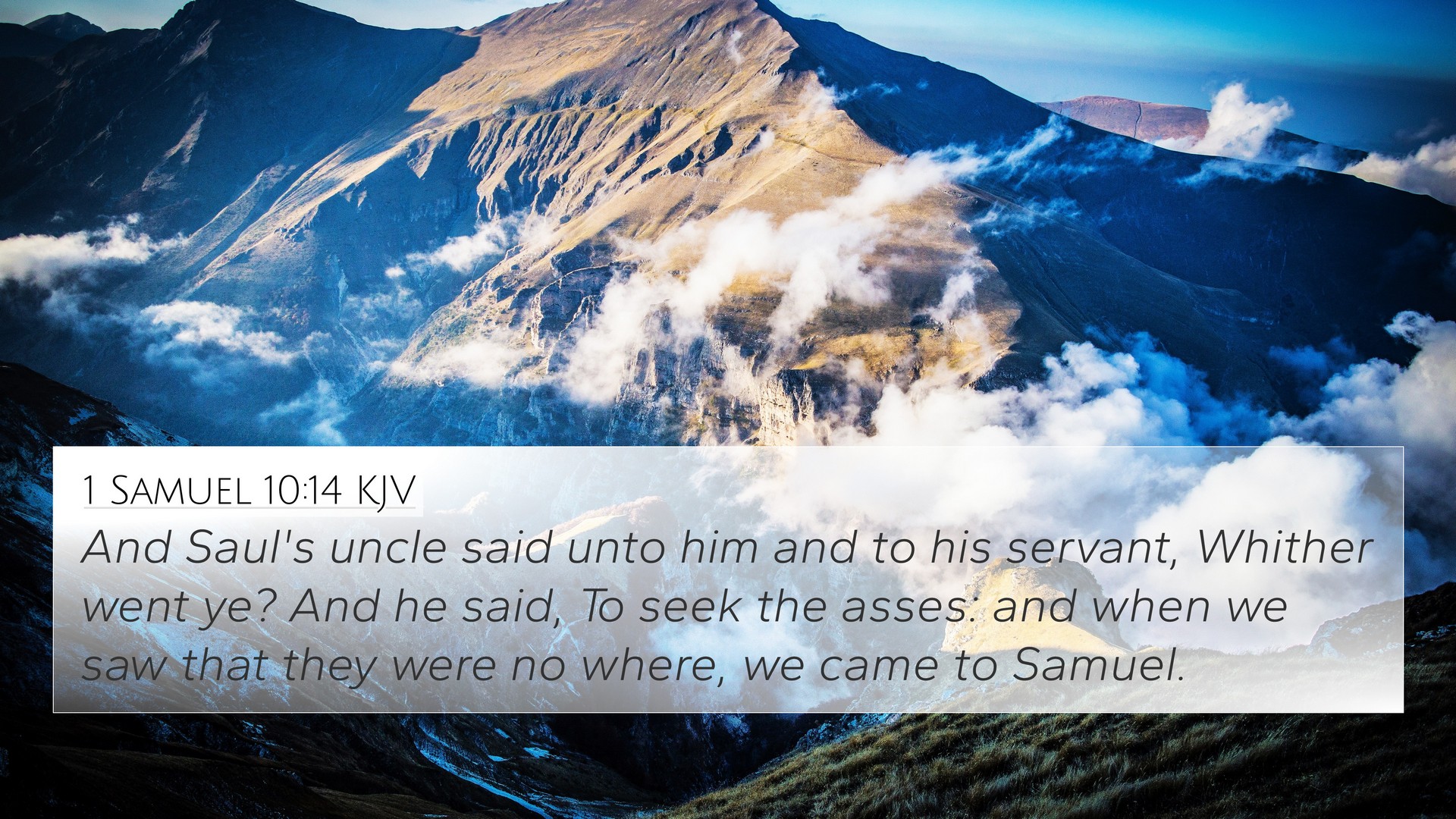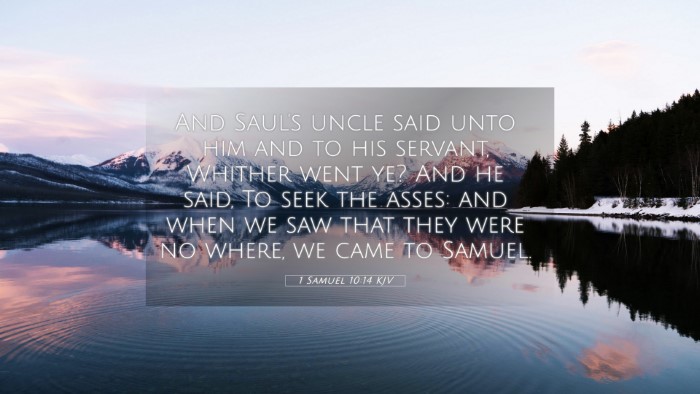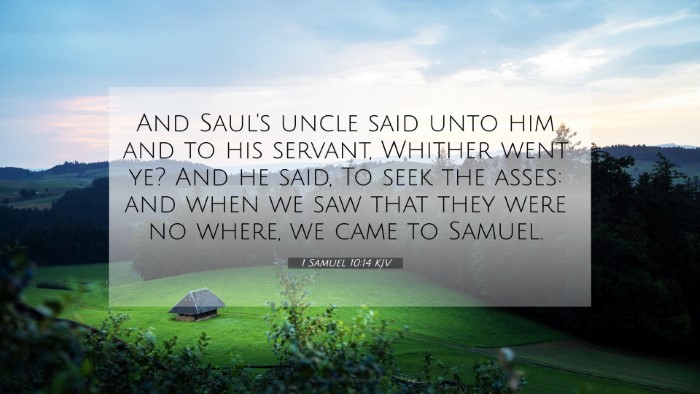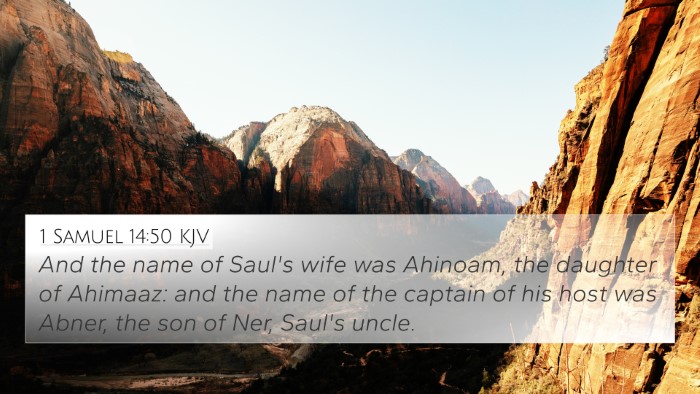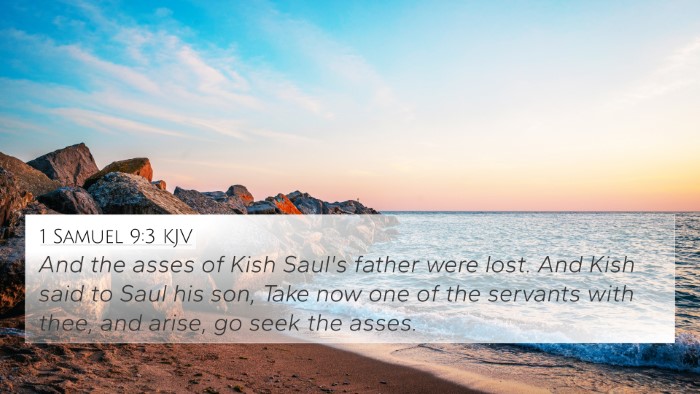Understanding 1 Samuel 10:14
Verse: 1 Samuel 10:14 - “And Saul’s uncle said unto him and to his servant, Whither went ye? And he said, To seek the asses: and when we saw that they were no longer, we came to Samuel.”
Context of the Verse
This verse is set in the context of Saul's anointing as king. Following the initial encounter with the prophet Samuel, Saul and his servant search for lost donkeys, which symbolizes God's guidance leading Saul to destiny. The interaction with Saul's uncle reveals the humility and the obscurity of Saul's initial steps into leadership.
Commentary Summary
The insights from Matthew Henry, Albert Barnes, and Adam Clarke provide a rich understanding of the implications of this verse.
Insights from Matthew Henry
- Saul's Journey: Henry points out that Saul’s search for the lost donkeys is a metaphor for God's providence—He leads us to significant encounters even during our ordinary tasks.
- Obedience in Humility: The humility displayed by Saul in responding to his uncle indicates that true leadership begins with a humble heart.
- Divine Preparation: The subsequent conversation signifies how God prepares individuals for great tasks through common experiences.
Insights from Albert Barnes
- Question of Direction: Barnes emphasizes the importance of inquiries regarding one's direction in life. Just as Saul was seeking donkeys, believers should seek guidance in their spiritual journeys.
- Uncertainty and Trust: The uncertainty of losing the donkeys mirrors the uncertainty believers may face, trusting in the overarching plan of God.
- Relational Dynamics: The interaction with his uncle shows how relationships can provide insight and clarity on one’s journey, suggesting the role community plays in guidance.
Insights from Adam Clarke
- Nature of Saul's Mission: Clarke notes that the trivial nature of Saul’s initial mission (searching for donkeys) illustrates how God often works through seemingly minor tasks.
- Role of Prophets: He highlights the significance of prophets in Israel, positioning Samuel as a crucial figure in confirming Saul's anointing and guiding him toward his purpose.
- Preparation for Leadership: Clarke suggests that this phase in Saul’s life was not merely about finding donkeys but was preparation for greater responsibilities, showcasing how God prepares leaders.
Bible Cross References
1 Samuel 10:14 connects with several other verses that provide additional insights into its themes:
- 1 Samuel 9:20: This earlier verse discusses the searching of lost donkeys and God's providential plan regarding Saul’s kingship.
- 1 Samuel 10:1: The anointing of Saul by Samuel sets the stage for the significance of this verse.
- Proverbs 16:9: “A man’s heart deviseth his way: but the Lord directeth his steps,” reflecting on God's guidance even in mundane matters.
- Isaiah 48:17: “Thus saith the Lord, thy Redeemer, the Holy One of Israel; I am the Lord thy God which teacheth thee to profit, which leadeth thee by the way that thou shouldest go,” emphasizing God’s guiding influence.
- Luke 16:10: “He that is faithful in that which is least is faithful also in much,” indicating the importance of small tasks leading to larger responsibilities.
- Romans 8:28: “And we know that all things work together for good to them that love God,” linking the theme of God working through all situations.
- Acts 13:21-22: Reference to Saul’s rise to kingship encourages understanding God’s choice in leadership roles.
Conclusion
Connecting Themes: The search for lost donkeys serves as a profound metaphor for divine guidance that is present even in our everyday tasks. This reflection leads us to praise God for His ability to use humble beginnings for His extraordinary purposes.
This exploration of 1 Samuel 10:14 through cross-referencing and thematic studies illustrates the interconnectedness of scripture and God’s continual work through historical narratives, prophetic calls, and the faithful obedience of His chosen leaders.
